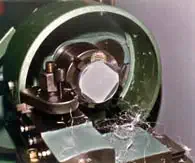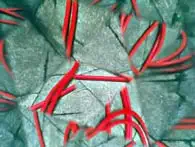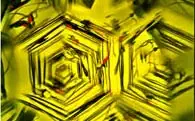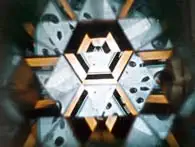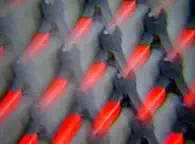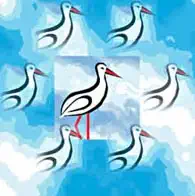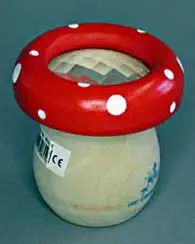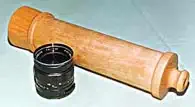 Among the numerous practice pieces I made to prepare for my journeyman woodturner exam were the turned parts for a small toy kaleidoscope. It goes without saying that this work made me want to complement the individual parts with an appropriate interior.
Among the numerous practice pieces I made to prepare for my journeyman woodturner exam were the turned parts for a small toy kaleidoscope. It goes without saying that this work made me want to complement the individual parts with an appropriate interior.
I acquired the knowledge of what a kaleidoscope looks like from the inside, so to speak “forcibly,” during my childhood. The insight that I gave acquaintances and friends through my self-made kaleidoscope was richly rewarded with comprehensive help in finding literature about kaleidoscopes. This is how I learned that the kaleidoscope was invented by the Scottish physicist D. Brewster (1781 – 1868). The word kaleidoscope comes from the Greek and means “beautiful image seer”. The kaleidoscope has recently developed from a primitive children's toy into a sought-after (and often expensive) art object: the use of beautiful mineral cuts or even butterfly wings as image objects, as well as the use of optically high-quality surface mirrors characterize such devices. In order to achieve a slow, “flowing” change in the images created, the space for the image objects can be filled with a liquid. Finally, a “high-tech kaleidoscope” contains different colored light-emitting diodes that are controlled according to the principle of the light organ. In other kaleidoscopes, spring mechanism drives change the images and at the same time drive musical mechanisms. By using additional lenses as well as color or polarization filters, further interesting optical effects (e.g. smeared color stripes) can be achieved. The kaleidoscope has also acquired a certain importance as a technical instrument: its use is described as an aid in designing fabric patterns and as a “trick device” in photography.




